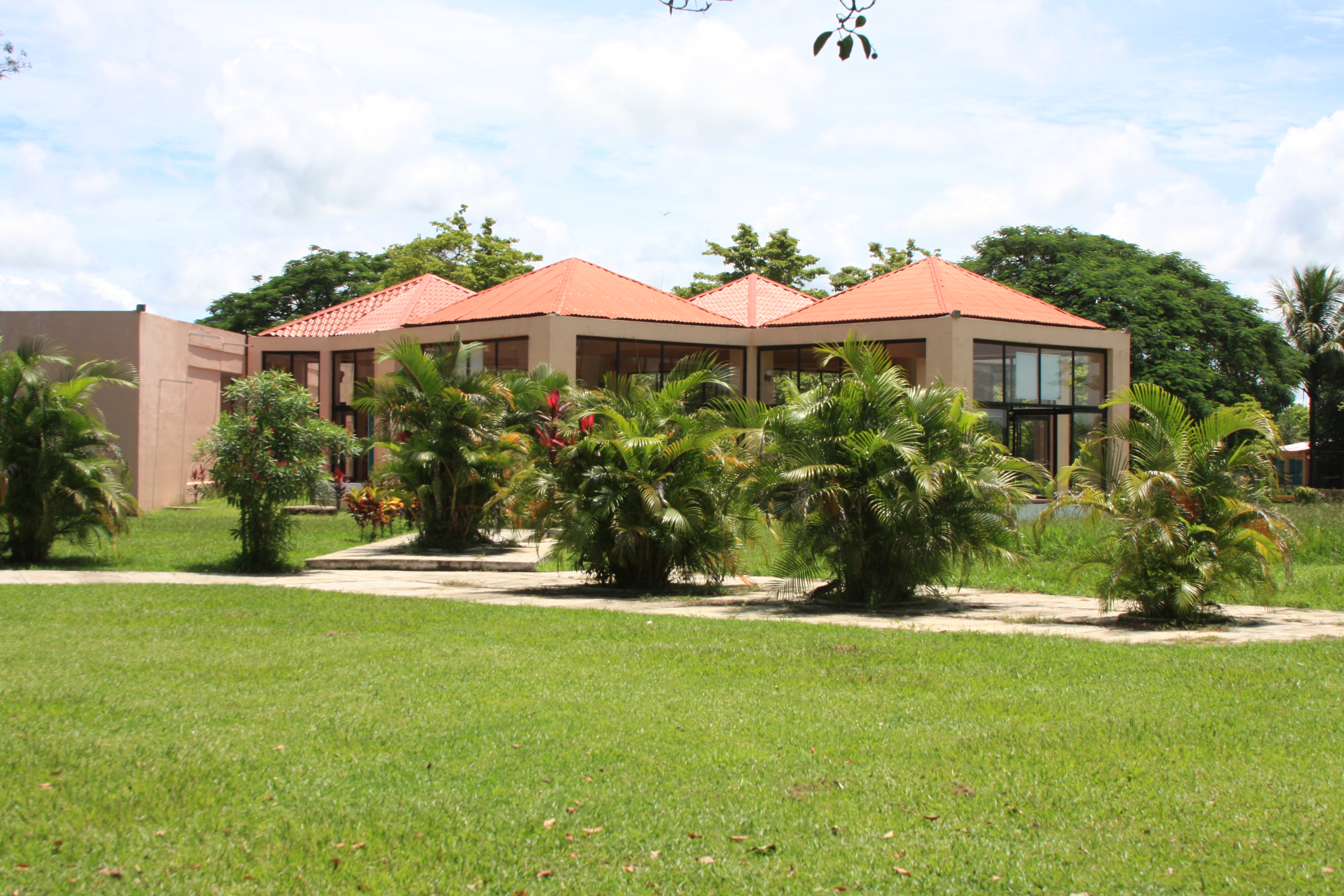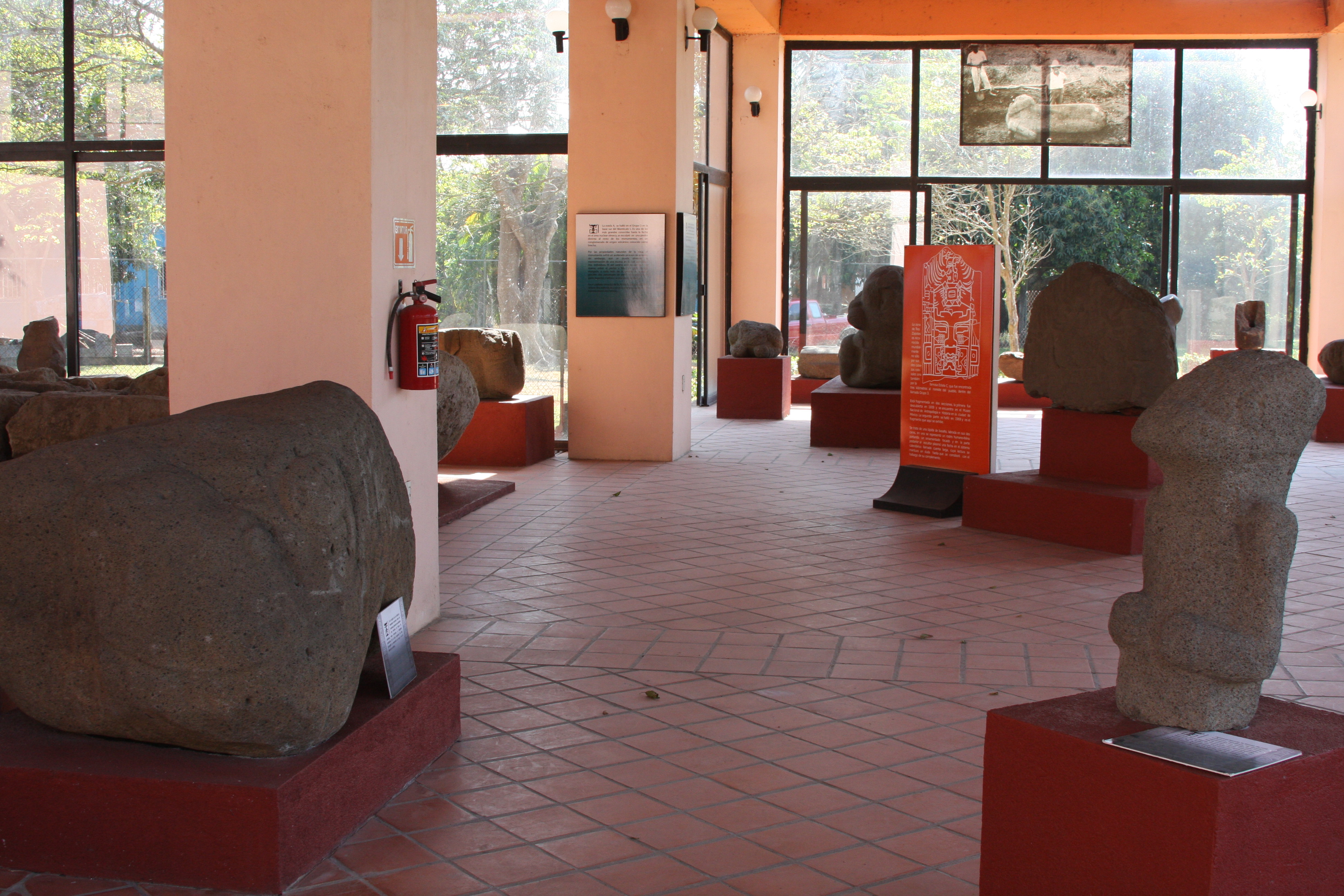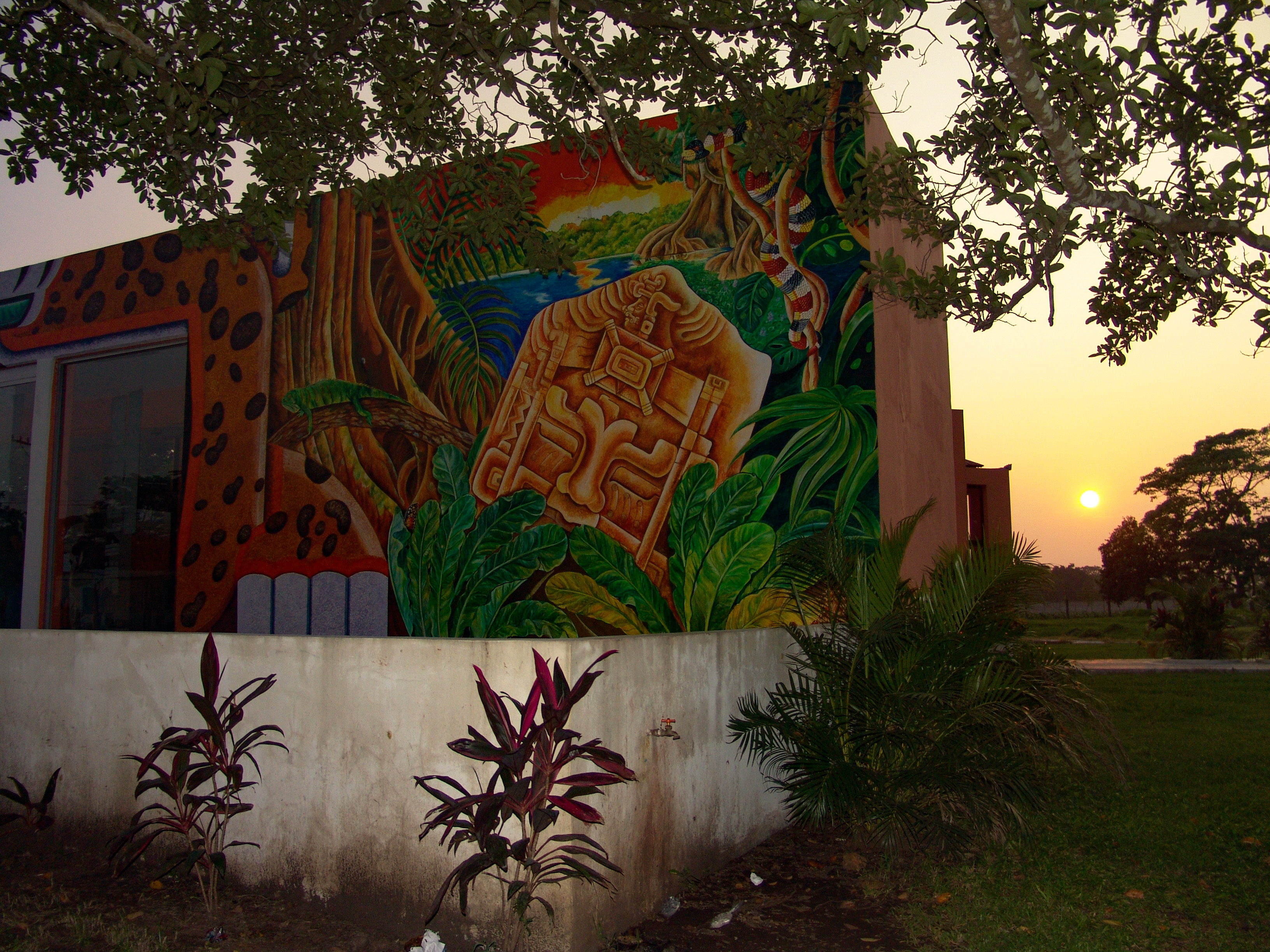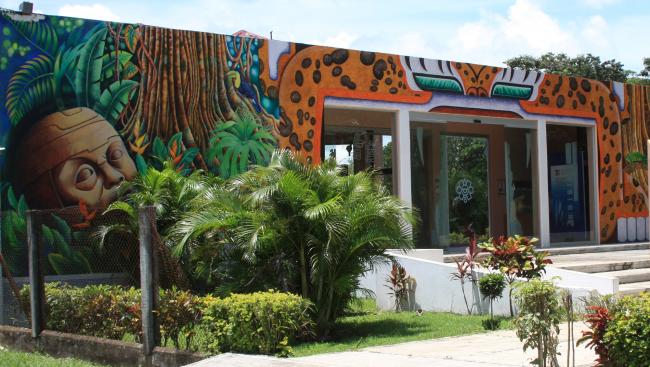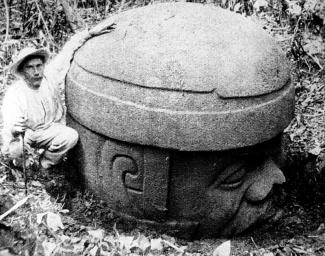The pre-Hispanic city of Tres Zapotes in Veracruz is famous for the discovery of the first colossal Olmec head by José María Melgar y Serrano in 1862, also for the discovery of several Olmec culture monuments over a number of seasons of archeological work in the field.
The Tres Zapotes Site Museum (1975) was built at the same time as the Tuxtec Regional Museum. Designed by the architect Jorge Agostoni, it consists of covered and open modules, the latter without walls or windows. The installations were renovated in 2005 with a stricter brief for the conservation of the stonework collection, hence the closing off of the open areas and the inclusion of windows. With a new exhibition plan organized by subject specialists, more items were added to the collection on display, and a perfectly aligned scale model of the pre-Hispanic city of Tres Zapotes was built, which is important since there is no access to the archeological site itself.
The museum has two galleries. The first has a timeline of the Olmec city of Tres Zapotes and displays a human burial of the Classic period with its offerings, a few ceramic pieces, pots, ear flares, spindle whorls (malacates) and green stone axes. The second gallery shows the sculpture collection with the colossal head known as the “Hueyapan Head,” Stela A which has the full calendar count, Stela D and Stela E, which is the museum’s most important piece and the oldest in Mesoamerica.




